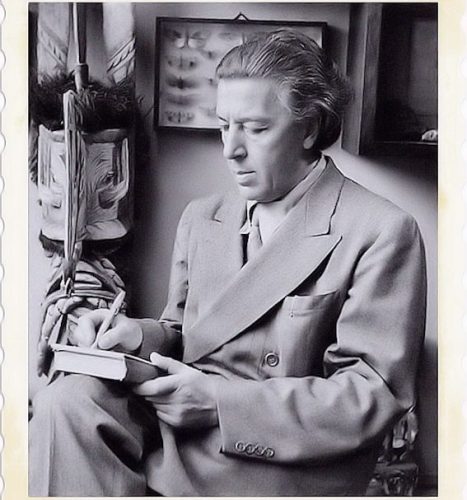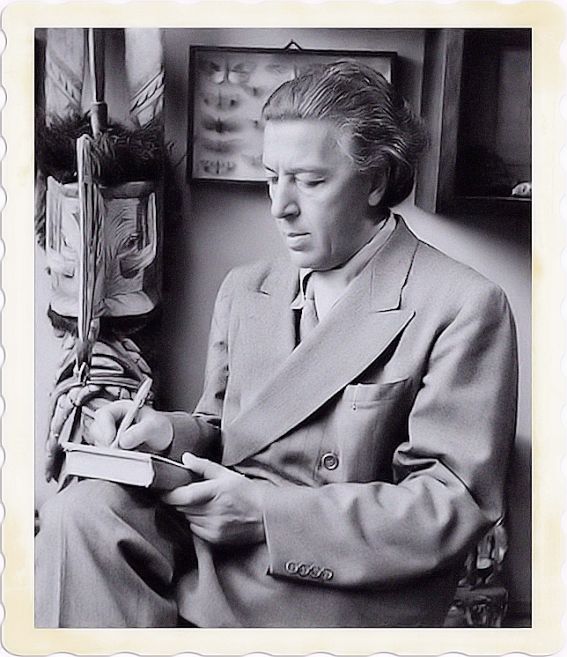
Surrealism and dadaism, an article that explains the essence of this revolutionary eclectic art with the quotes of some founding members of the movements.
N’en doutez pas, ce sont les ennemmis de l’ordre qui mettent en circulation ce philtre d’absolu. Ils le passent secrètement sous les yeux des gardiens, sous la forme de livres, de poèmes. Le prétext anodin de la littérature leur permet de vous donner à un prix défiant toute concurrence ce ferment mortel duquel il ste grand temps de généraliser l’usage… Achetez, achetez la damnation de votre âme, vous allez enfin vous perdre, voici la machine à chavirer l’esprit. J’annonce au monde ce fait-divers de première grandeur : un nuoveau vice vient de naître, un vertige de plus est donné à l’homme : le surrealisme, fils de la frénésie et de l’hombre. Entrez, entrez, c’est ici que commencent les royaumes de l’instantané.
Louis Aragon, le Paysan de Paris, 1924
The work of art, just like any fragment of human life considered in its deepest meaning, seems to me devoid of value if it does not offer the hardness, the rigidity, the regularity, the luster on every interior and exterior facet, of the crystal.
André Breton
Elle s’appelait Sonia, traits orientaux, elle expliqua le chinois en français, plus jolie qu’une beauté onirique, même si elle était peut-être presque réelle, donc je ne sais pas pourquoi, mais quand je l’ai vu, Aurélia, Angélique, Sylvie, Jemmy, Octavie, Isis, Corilla, Émilie, les filles du feu, me sont venus à l’esprit, et j’ai eu l’impression d’être le pauvre Nerval pendu aux barreaux d’une grille!
Carl William Brown
Qui est là? Ah très bien, faites entrer l’infini et Carl William Brown aussi!
Louis Aragon
The simplest surrealist gesture consists in going out into the street, gun in hand, and taking pot shots at the crowd!
Surrealist Slogan From The 1920S.
Surrealism is a bourgeois disaffection; that its militants thought it universal is only one of the signs that it is typically bourgeois.
Susan Sontag
Surrealism is everywhere, but not its true spirit. So I declare that after the Pope we are the real successors of this fantastic, rebellious, anti-conventional and anti-conformist movement!
Carl William Brown and the Daimon Club
Surrealism is not a school of poetry but a movement of liberation… A way of rediscovering the language of innocence, a renewal of the primordial pact, poetry is the basic text, the foundation of the human order. Surrealism is revolutionary because it is a return to the beginning of all beginnings.
Octavio Paz
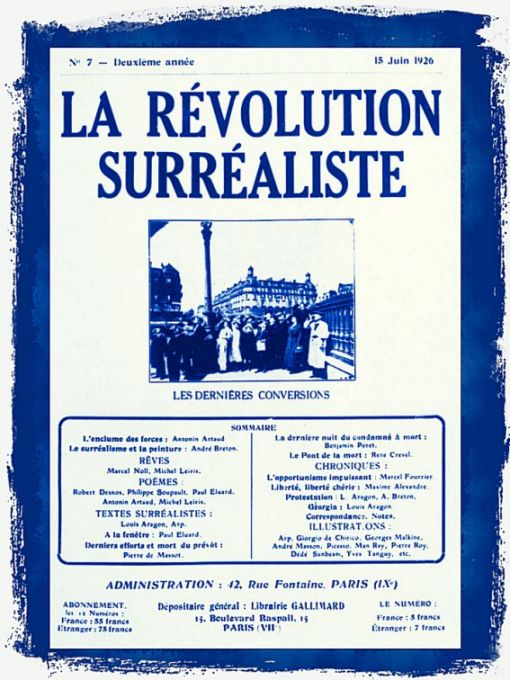
Surrealism is merely the reflection of the death process. It is one of the manifestations of a life becoming extinct, a virus which quickens the inevitable end.
Henry Miller
Surrealism… is the forbidden flame of the proletariat embracing the insurrectional dawn enabling us to rediscover at last the revolutionary moment: the radiance of the workers’ councils as a life profoundly adored by those we love.
Manifesto of the Arab Surrealist Movement (1975).
To be a surrealist… means barring from your mind all remembrance of what you have seen, and being always on the lookout for what has never been.
René Magritte
Like all revolutions, the surrealist revolution was a reversion, a restitution, an expression of vital and indispensable spiritual needs.
Eugène Ionesco
Le surréalisme, c’est moi.
Salvador Dali
Surrealism, n. Pure psychic automatism, by which it is intended to express, whether verbally or in writing, or in any other way, the real process of thought. Thought’s dictation, free from any control by the reason, independent of any aesthetic or moral preoccupation.
André Breton
Surrealism tried to overcome the stupid and sad banality of our reality to get closer and closer to a possible and cheerful ideality.
Carl William Brown
Instead of stubbornly attempting to use surrealism for purposes of subversion, it is necessary to try to make of surrealism something as solid, complete and classic as the works of museums.
Salvador Dali
Surrealism is nothing more than a literary philosophical conception of art and life that tries to overcome the squalid and banal conventions of our stupid existential reality.
Carl William Brown
An aesthetic movement with a revolutionary dynamism and no popular appeal should proceed quite otherwise than by public scandal, publicity stunt, noisy expulsion and excommunication.
Cyril Connolly
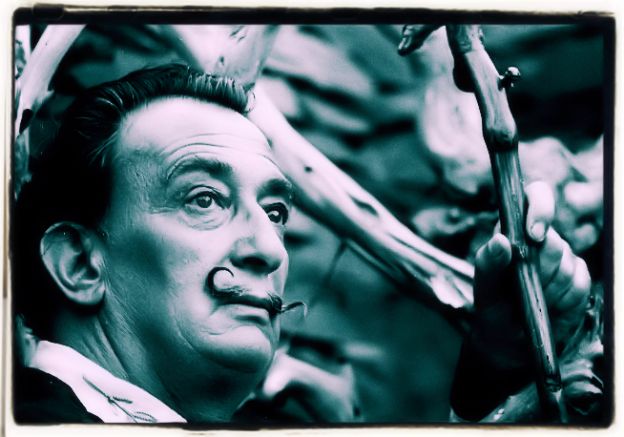
The vice named surrealism is the immoderate and impassioned use of the stupefacient image, or rather of the uncontrolled provocation of the image for its own sake and for the element of unpredictable perturbation and of metamorphosis which it introduces into the domain of representation; for each image on each occasion forces you to revise the entire Universe.
Louis Aragon
Breton, André (1896-1966), French poet and critic, a leader of the surrealistic movement. He was born in Tinchebray, Orne Department, studied medicine, and worked in psychiatric wards in World War I. Later, as a writer in Paris, he was a pioneer in the antirationalist movements in art and literature known as Dadaism and surrealism, which developed out of the general disillusionment with tradition that marked the post-World War I era.
Breton’s study of the works of Sigmund Freud and his experiments with automatic writing influenced his formulation of surrealist theory. He expressed his views in Litérature, the leading surrealist periodical, which he helped found and edited for many years, and in three surrealist manifestos (1924, 1930, 1942). His best creative work is considered the novel Nadja (1928), based partly on his own experiences. His poetry, in Selected Poems (1948; trans. 1969), reflects the influence of the poets Paul Valéry and Arthur Rimbaud.
SURREALISM
Surrealism, movement in literature and the fine arts, founded by the French poet and critic André Breton. Breton published his Surrealist Manifesto in Paris in 1924 and consistently dominated the movement. Surrealism grew directly out of the movement known as Dadaism, an art and literary movement reflecting nihilistic protest against all aspects of Western culture. Like Dadaism, surrealism emphasized the role of the unconscious in creative activity, but it employed the psychic unconscious in a more orderly and more serious manner.
Surrealist Literature
The surrealists claimed as their literary forebears a long line of writers, outstanding among whom is the Comte de Lautréamont, author of the lengthy and complicated work Les chants de Maldoror (1868-1870). Besides Breton, many of the most distinguished French writers of the early 20th century were at one time connected with the movement; these include Paul Eluard, Louis Aragon, René Crevel, and Philippe Soupault. Younger writers such as Raymond Queneau were also influenced by its points of view.
Pure surrealist writers used automatism as a literary form, that is, they wrote whatever words came into their conscious mind and regarded these words as inviolable. They did not alter what they wrote, as that would constitute an interference with the pure act of creation. The authors felt that this free flow of thought would establish a rapport with the subconscious mind of their readers.

A typical short example of surrealist writing is the proverb by Paul Éluard that states “Elephants are contagious.This purely psychic automatism was modified later by the conscious use, especially in painting, of symbols derived from Freudian psychology. Like their forerunners, the Dadaists, the surrealists broke accepted rules of work and personal conduct in order to liberate their sense of inner truth. The movement spread all over the world and flourished in America during World War II (1939-1945), when André Breton was living in New York City.
Surrealism in Art
In painting and sculpture surrealism is one of the leading influences of the 20th century. It claimed as its ancestors in the graphic arts such painters as the Italian Paolo Uccello, the British poet and artist William Blake, and the Frenchman Odilon Redon. In this century it also admired, and included in its exhibitions, works by the Italian Giorgio de Chirico, the Russian Marc Chagall, the Swiss Paul Klee, the French artists Marcel Duchamp and Francis Picabia, and the Spaniard Pablo Picasso, none of whom was ever a member of the surrealist group. From 1924 the German Max Ernst, the Frenchman Jean Arp, and the American painter and photographer Man Ray were among its members.
They were joined for a short time about 1925 by the Frenchman André Masson and the Spaniard Joan Miro, who remained members for some time but were too individualistic as painters to submit to the strong leadership of André Breton, who exercised final authority over the movement. Later members of the group included the French-American Yves Tanguy, the Belgian Rene Magritte, and the Swiss Alberto Giacometti.
The Catalan painter Salvador Dali joined the surrealist movement in 1930 but was later denounced by most surrealists because he was held to be more interested in commercializing his art than in surrealist ideas. Although for a time he was the most talked-about member of the group, his work is so idiosyncratic as to be only partially typical of surrealism.
Surrealist painting exhibits great variety of content and technique. That of Dalí, for example, consists of more or less a direct and photographic transcription of dreams, deriving its inspiration from the earlier dreamlike paintings of de Chirico. Arp’s sculptures are large, smooth, abstract forms, and Miró, a formal member of the group for a short time only, employed, as a rule, fantastic shapes, which included deliberate adaptations of children’s art and which also had something in common with the designs used by the native Catalan artists to decorate pottery.
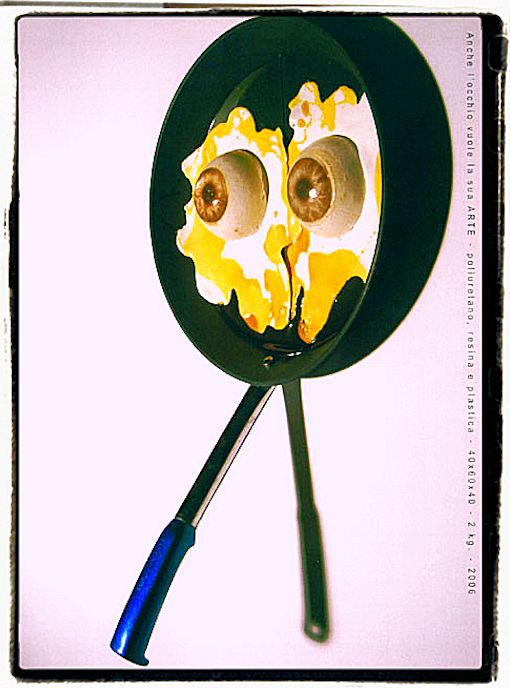
The Russian-American painter Pavel Tchelichew, while not a member of the surrealists, created surrealist images in his paintings as well as in his numerous ballet designs. An American offshoot of the surrealist movement is the group of artists known as the magic realists, under the leadership of the painter Paul Cadmus. The group also includes George Tooker, Ivan Le Lorraine Albright, Philip Evergood, Peter Blume, and Louis Guglielmi.
The assemblage sculptor Joseph Cornell began as an acknowledged surrealist, but later pursued his highly individual art. The surrealists’ attitude toward free creation was a major influence on the beginnings of abstract expressionism in New York City. A representative collection of the graphic works of the surrealists is in the Museum of Modern Art and of the magic realists in the Whitney Museum of American Art, both in New York City.
DADA, DADA, DADA!
Dada, artistic and literary movement reflecting a widespread nihilistic protest against all aspects of Western culture, especially against militarism during and after World War I (1914-1918). The term dada, the French word for hobbyhorse, is said to have been selected at random from a dictionary by the Romanian-born poet, essayist, and editor Tristan Tzara. Dada was originated in 1916 by Tzara, the German writer Hugo Ball, the Alsatian-born artist Jean Arp, and other intellectuals living in Zürich, Switzerland.
A similar revolt against conventional art occurred simultaneously in New York City led by Man Ray, Marcel Duchamp, and Francis Picabia, and in Paris, where it became the inspiration for the Surrealist movement. After World War I the movement spread to Germany, and many of the Zürich group joined French Dadaists in Paris. The Paris group disintegrated in 1922.
In their efforts to express the negation of all current aesthetic and social values, the Dadaists frequently used artistic and literary methods that were deliberately incomprehensible. Their theatrical performances and manifestos were often designed to shock or bewilder, with the aim of startling the public into a reconsideration of accepted aesthetic values. To this end, the Dadaists used novel materials, including discarded objects found in the streets, and new methods, such as allowing chance to determine the elements of their works.
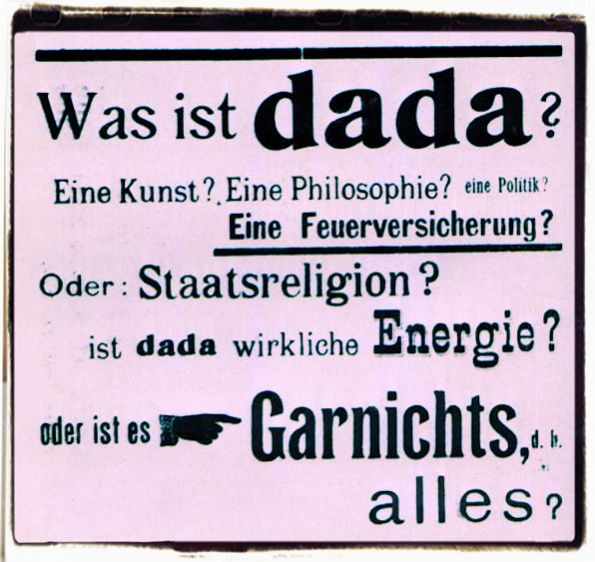
The German painter and writer Kurt Schwitters was noted for his collages composed of waste paper and similar materials. French painter Marcel Duchamp exhibited as works of art ordinary commercial products such as a store-bought bottle rack and a urinal which he called ready-mades. Although the Dadaists employed revolutionary techniques, their revolt against standards was based on a profound belief, stemming from the romantic tradition, in the essential goodness of humanity when uncorrupted by society.
Dada as a movement declined in the 1920s, and some of its practitioners became prominent in other modern-art movements, notably surrealism. During the mid-1950s an interest in Dada was revived in New York City among composers, writers, and artists, who produced many works with Dadaist features.
Museum of Modern Art, institution founded in 1929 in New York City to help people enjoy, understand, and use the visual arts of our time by the American philanthropists Lillie P. Bliss, Mary Quinn Sullivan, and Abby Aldrich Rockefeller. It is believed to be one of the finest museums of modern art in the world, with widely diverse collections emphasizing developments in art since the post-impressionism of the late 19th century.
Over the years the museum’s collection has grown to include more than 100,000 paintings, sculptures, drawings, prints, photographs, architectural models and plans, and design objects. It also includes some 10,000 films and a library containing more than 80,000 books and periodicals.
From the opening exhibition, Cézanne, Gauguin, Seurat, Van Gogh, held in 1929 in several rented rooms, the museum has attempted to reach a wide audience. In 1932 and 1933 it mounted the first exhibitions of photography, architecture, and furniture and the decorative arts. In 1935 it organized the Film Library (now the Department of Film and Video), the first such program in any museum. It has periodically mounted retrospective exhibitions of significant artists and art movements, incorporating objects from its own holdings with those borrowed from other museums worldwide, and it has sponsored many traveling exhibitions.
In 1939 the museum moved into permanent headquarters, designed by the American architects Philip L. Goodwin and Edward Durell Stone, on West 53rd Street. Since 1939 much additional property and several wings have been added, such as the Abby Aldrich Rockefeller Sculpture Garden (1953, expanded 1964), designed by the American architect Philip C. Johnson. In its most recent expansion, designed by the Argentinian-American architect Cesar Pelli and completed in 1984, the museum added a second theater and doubled its gallery space for the 1.5 million visitors each year.

In the museum’s vast collections are paintings, sculpture, prints, and drawings that give a complete overview of the major figures and trends in art from the 1880s to the present; photographs from the pioneers of the mid-19th century to the recent masters; and, in the design collection, two automobiles and a helicopter. The sculpture garden is a favorite oasis for many visitors because of its pleasing combination of fountains, trees, reflecting pools, and sculpture.
Whitney Museum of American Art, museum of fine art in New York City, founded in 1914 as the Whitney Studio Club by Gertrude Vanderbilt Whitney, an American philanthropist and patron of the arts. The museum adopted its current name in 1930, and in 1966 it moved to its current location in a building designed by Hungarian-American architect Marcel Breuer.
The museum’s holdings represent one of the world’s most comprehensive collections of 20th-century American art, including the artistic estate of the American painter Edward Hopper, consisting of more than 2500 oil and watercolor paintings as well as drawings and prints; more than 850 works by American painter Reginald Marsh; and American sculptor Alexander Calder’s sculpture Circus. In 1967 the Whitney Museum of American Art founded the Whitney Museum Independent Study Program (ISP). A university-level institution, ISP provides courses in art, art history, and artistic production.
You can also read:

